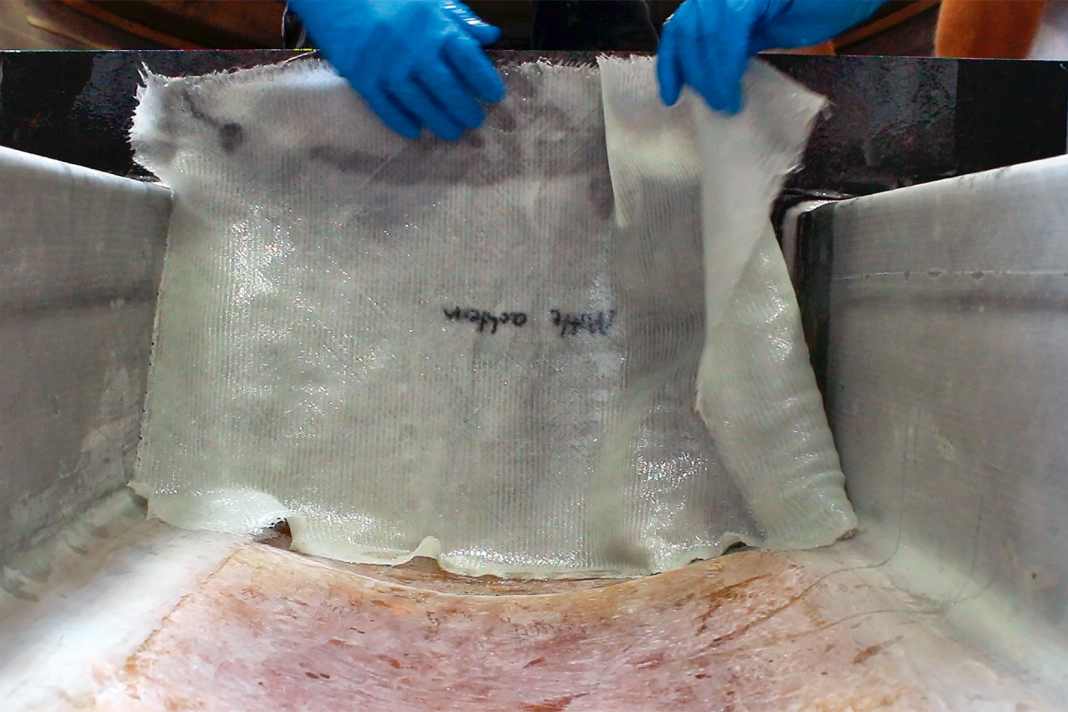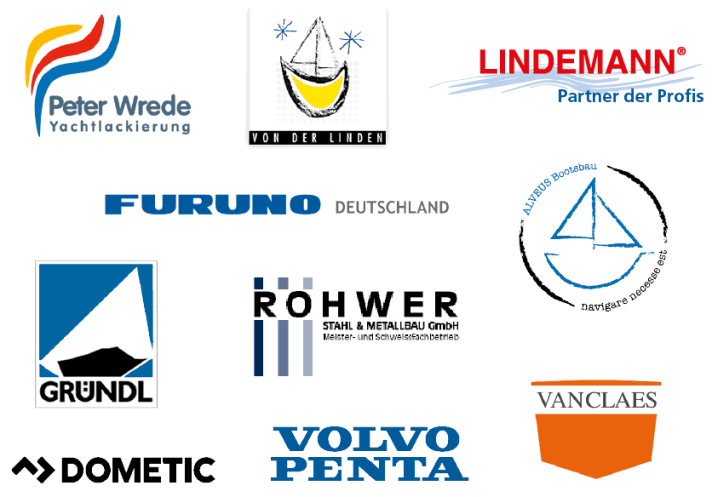





All episodes of the refit project:
- Part 1: Stocktaking
- Part 2: Replacing the rear view mirror
- Part 3: The underwater hull
- Part 4: GRP repairs
- Part 5: Antifouling coating
- Part 6: The motor foundation
- Part 7: The stringer system
- Part 8: The new engine
- Part 9: The new tank
- Part 10: The interior fittings
- Part 11: The interior work continues
- Part 12: The side panelling
- Part 13: Surface treatment and colour
Without floor beams and a solid stringer system, boat hulls would not be much more stable than a cardboard box, to put it bluntly. The transverse and longitudinal stiffeners give the hull construction the necessary strength. Provided they are correctly dimensioned, perfectly fitted and firmly connected to the hull. The almost thirty year old stringers of our Conquest ended up in the hull together with the rotten motor foundation from part 6 on the "compost heap".
As with the foundations for the engine, Coosa was also the first choice for the new stringers. The composite panels, which are made from polyurethane foam filled with continuous glass fabric and reinforced with glass roving fabric, do not absorb moisture and are significantly (40%) lighter than plywood.
That's why they are at the top of the hit parade of our refit professionals from Alveus Bootsbau and M.u.H. von der Linden. Before the new stringers can be fitted between the floor cradles, the remains of the old ones have to be completely removed. Original quote from Alveus boss Dembler-Malik: "It's a cracking job." Once the stringers have been cut to size, the adhesive, a mixture of epoxy resin, hardener and filler, can be applied to the stands using the "spraying bag". Once the stringers are in place, they are screwed to the floor cradles and brought into perfect (hull) shape using a batten frame.
Glass fabric must be carefully cut to size
When cutting the glass fabric to size, the templates of the floor cradles serve as a cutting pattern. A 5 cm wide block, which is guided along the contours of the template with a felt-tip pen, draws the desired oversize. After cutting, the dry fabric is tried on again in the boat. In the case of the fabric mats for the stringers, the measurements are taken on site in the boat and transferred directly to the mats. Cutting is carried out using scissors with micro-serration, which ensure a clean cut even in the smallest corners. A normal pair of household scissors won't cut it. If everything fits, the fabric mats are labelled. If you don't label them, you will quickly lose track of more than thirty pieces.
Glass fabric laminate is not so easy to lay at a 90-degree angle around corners. This is why you have to make a fillet at these points. Without a coving, the fabric mat tends to lift up again and again, preventing a proper connection to the substrate. Epoxy resin, hardener and a filler, whose quartz powder prevents the resin from dripping on vertical surfaces, are carefully mixed together for the cove. Mixing is done according to the tried and tested "baking recipe": once the "dough" has set, the mixture is perfect.
After the coving comes the laminate
The finished mixture is filled into a freezer bag, one corner of which has been cut off beforehand. Using the "piping bag", a "clean sausage" is placed along the stringer edges, which is then smoothed out with a mixing stick from the Von der Linden range. After curing (24 hours), the professionals soak the cut fabric mats with a resin-hardener mixture (5:1). The surfaces of the Coosa panels are pre-coated with the same mixture so that no resin is drawn out of the laminate.
The laminate is then laid in the appropriate places, cut into the corners and smoothed by hand. Air bubbles are "smoothed out" with a roller. Important: when smoothing, ensure that the coving is not damaged. Finally, all surfaces are covered with a tear-off fabric. Caution: The fabric is not intended for laminating, but only for tearing down. The result is a surface that does not need to be reworked.
Video of the refit project
The BOOTE Refit project is supported by


